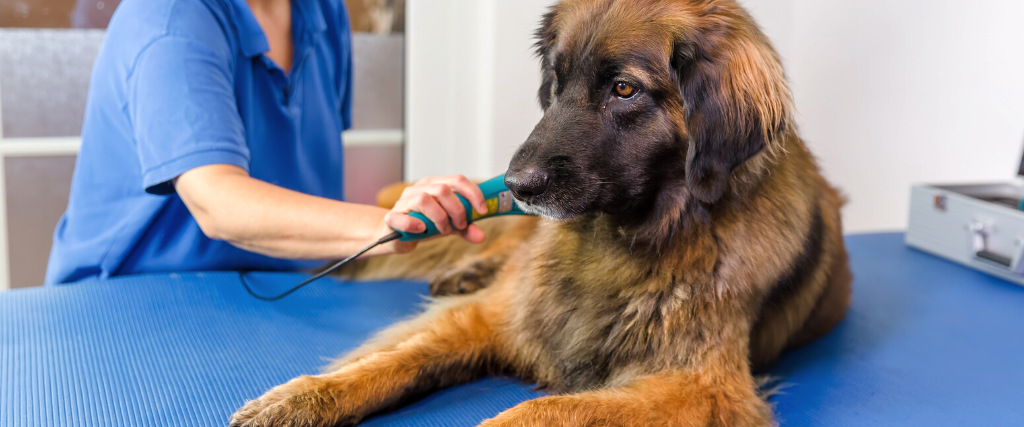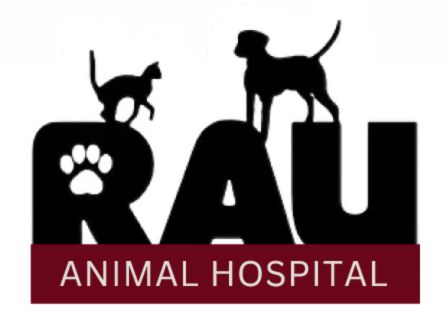Hip dysplasia is most common in large breed dogs. Most people have heard of hip dysplasia but don't necessarily know exactly what it is. Hip dysplasia occurs when there is abnormal development or growth of the hips. It essentially means that there is a poor fit between the "ball and socket" of a hip. This occurs when a puppy is growing. The head of the femur (thigh bone) is the ball, and the acetabulum is the socket part of the pelvis. When these two pieces don't fit together well, the joint doesn't get well lubricated and therefore doesn't glide smoothly when the dog walks. This eventually leads to arthritis because the dog's body is trying to stabilize the joint.
Some dogs will exhibit pain from hip dysplasia at a young age, while other dogs are much older before their hip dysplasia becomes a problem. Lighter dogs with more muscle mass (i.e., younger dogs have better muscle mass than older dogs) are less likely to have issues with hip dysplasia unless it's very severe. Some dogs will display severe hip dysplasia on X-rays but will have no clinical signs.

If your dog is diagnosed with hip dysplasia, there are a variety of treatment options. The following surgical options are available:
- Triple pelvic osteotomy: This is commonly done in dogs 8-18 months of age that have dysplasia without degenerative arthritis changes. With this surgery, the poor-fitting acetabulum (socket) is basically sawed free of the rest of the pelvis and repositioned so that a tighter fit to the femoral head is obtained. Surgical plates are then used to stabilize the joint. Aftercare involves 3-4 months of exercise restriction.
- Femoral Head/Neck Ostectomy (FHO): This surgery is best for dogs under 50 pounds or very active dogs. With this surgery, the femoral head (ball) is removed, which allows the joint to heal as a false joint. Recovery time is much faster with this procedure, and it tends to be cheaper than other surgical options.
- Total Hip Replacement: This procedure is for dogs with established degenerative hip changes. Although the thought of a dog having a hip replacement may sound extreme, it has been done in dogs for over 20 years and is often very successful. Usually, only one hip is done at a time, and the recovery period is about three months.
If surgery is not an option, then non-surgical options include management of the arthritis pain with non-steroidal anti-inflammatory medication, joint supplements, fish oil, acupuncture, or laser therapy.
Chief's Diagnosis And Treatment
Chief, one of my patients, was diagnosed with hip dysplasia at 11 years of age. Chief's owner brought him to me in late November because he was acting strangely with his hind end. Chief's owner had noticed that he was walking oddly with his hind end and having a hard time getting up and down off of the floor. She felt that the change was fairly sudden. On exam, I noticed that Chief was walking with decreased range of motion in his right hind leg and expressed pain on manipulation of his right hind limb. I decided to take x-rays and diagnosed Chief with hip dysplasia and osteoarthritis. His right hind limb was worse than the left. The owner and I discussed medical management options since surgery was not an option for Chief. The owner really wanted to try laser therapy to see if it would help give him some pain relief.
When people hear the word laser therapy, two things seem to happen. First, there is a look of bewilderment on their face, and I get the feeling that they are thinking of Star Wars. The second thing is that people often think it's very expensive and are usually shocked at how economical laser therapy can be.

How Laser Therapy Worked For Chief
Laser therapy works by using wavelengths of light. The wavelengths of light work on a cellular level and interact with the metabolic activity within a cell, which causes improvement in the transport of nutrients across the cell membrane. This leads to beneficial effects and increases cellular function and health. Class IV laser therapy reduces inflammation, increases circulation, and promotes healing and endorphin release.
Chief started his laser therapy for hip dysplasia and arthritis on November 30th and had a second treatment on December 2nd. After Chief's second laser therapy treatment, his owner noticed a huge improvement. Chief is now having no issues getting up and down off of the floor, and he's playing and wanting to move around more.
Laser therapy can't help everything, but it can be used in conjunction with medications or by itself for many conditions. We use it in our clinic for skin issues, post-surgery, arthritis, back pain, and acute injuries, to name just a few. If you believe your pet is suffering from hip dysplasia, make sure to talk to your veterinarian to explore the various treatment options that are available for your pet.

